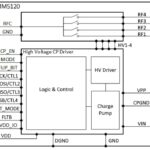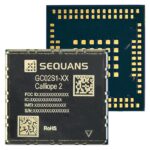Designers have choices when it comes to creating new IoT designs, and connectivity choices will depend on the constraints of the design.
5G
SP4T RF switch passes 25 W of power
The MM5120 from Menlo Micro lets you send an RF signal to as many as four locations such as filters or antennas.
LTE Cat 1 modules target worldwide IoT connectivity
The LENA-R8 and LARA-R6 modules from u-blox connect devices to LTE networks, helping to minimize the impact of 2G and 3G shutdowns.
Low-voltage MOSFETs feature low Rss(on) for smartphone battery PCMs
Magnachip Semiconductor Corporation announced the launch of a new generation Low-Voltage Metal Oxide Semiconductor Field Effect Transistors (LV MOSFETs) featuring lower Rss(on) for battery Protection Circuit Modules (PCMs) in smartphones. As demand for high-end 5G and LTE smartphones increases, extended battery life and strengthened protection features for batteries are becoming important. 5G phones, in particular, need long-lasting […]
Bring Wi-Fi, Bluetooth, and 802.15.4 connectivity to devices
The IW612 from NXP lets you add three radios to IoT devices. Support for Matter provides a universal API.
2022: The 5G predictions
Several standouts for 2022 reached our editorial offices. We present them here.. As one year ends and another begins, so come the predictions. Over the past two years, we’ve seen how predicting the upcoming year is harder than ever. That doesn’t stop anyone from trying, though. How many of us throught we’ve still be dealing…
5G EMF emissions fall well within safety limits
Measurements show EM fields from 5G Massive MIMO base stations fall within WHO boundaries for human safety. Professor Wout Joseph, WAVES an imec research group at Ghent University, Belgium Massive multiple-input/multiple-output (MIMO) technology, a key enabler of 5G networks, uses antennae consisting of tens of sub-elements to direct radio beams to mobile users’ exact location.…
5G altimeter interference: aviation versus telecoms
The auctioning of the C-band for 5G use has raised concerns in North America that signals could interfere with aircraft altimeter operations. 5GTW asked a filter engineer and a test expert if there’s a problem and how to fix it.
5G transceiver doubles Tx/Rx channels and bandwidth
The ADRV9040 SoC from Analog Devices provides 400 MHz channel bandwidth across eight transmit and receive channels
Cellular LTE Cat 1 module supports 4G and 5G
The Calliope 2 GC02S1 module from Sequans lets you take advantage of wide coverages for IoT devices with data rates to 10 Mb/sec. Sequans Communications series of Cat 1 IoT modules based on its second generation, LTE Cat 1bis chip, Calliope 2, are now available. The Calliope 2 GC02S1 low-cost, low-power, IoT-optimized modules that support…











